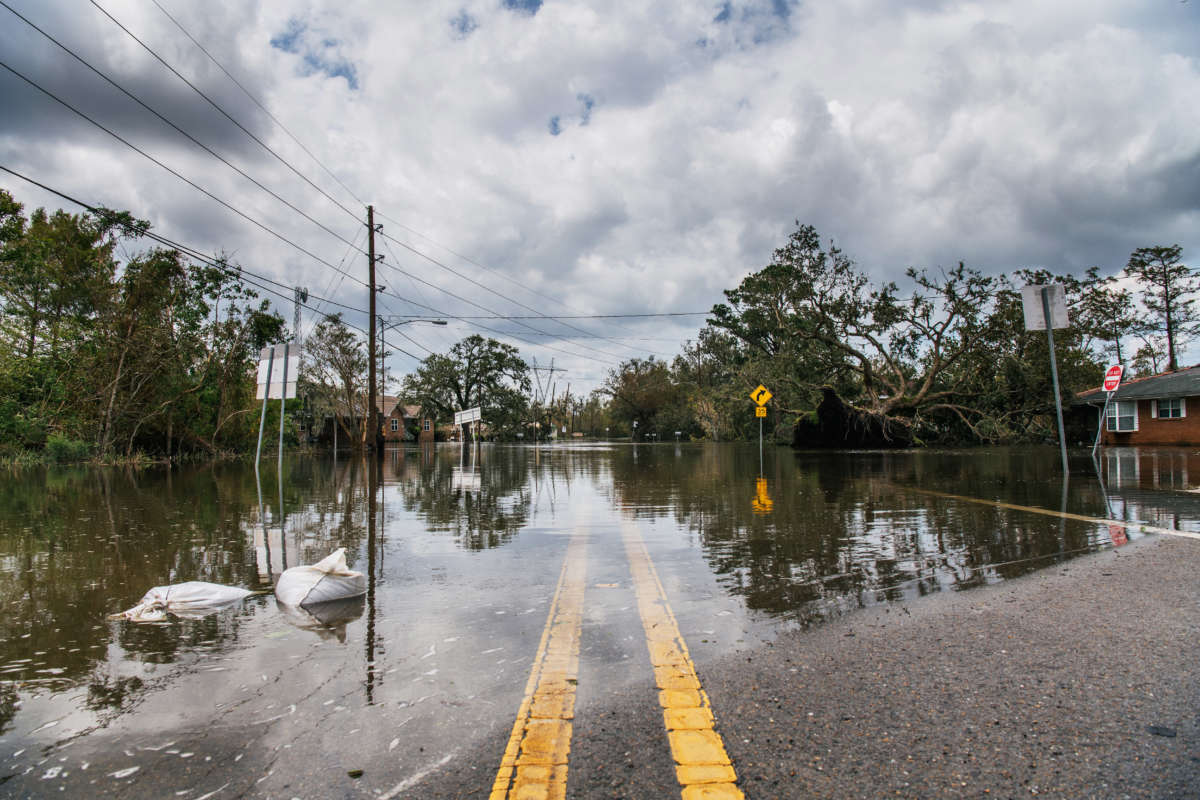Hundreds of thousands of homes and other properties across millions of acres in the U.S. are projected to be at least partially submerged by sea water by 2050, according to a new analysis released Thursday, with major implications not just for homeowners but also public services in their communities as tax bases in hundreds of counties are expected to shrink.
The nonprofit research group Climate Central examined the sea level rise that’s been projected by experts at the National Oceanic and Atmospheric Administration (NOAA) — which found earlier this year that sea levels in U.S. coastal areas could rise by about one foot by 2050 — tidal boundary lines, and records regarding more than 50 million properties in coastal areas, finding that nearly 650,000 individual properties are most at risk of falling below tidal boundaries within the next three decades.
“Sea level rise is shifting the high and low tide lines that coastal states use to define boundaries between public and private property,” said Climate Central. “As these boundaries shift, private property will be lost to permanent coastal flooding.”
Louisiana has the most homes and other buildings at risk, with more than 25,000 properties across 2.5 million acres expected to fall below tide level boundaries by 2050 — amounting to 8.7% of the state’s total land area being inundated by sea water.
Florida, North Carolina, and Texas are the next three most at-risk states in the nation, accounting for 87% of the land area expected to be lost to the sea. New Jersey, New York, and Maryland were also identified as states that are likely to see thousands of properties submerged.
Don Bain, a senior adviser at Climate Central who led the research, told The Washington Post that the analysis should be a wake-up call for frontline communities that need to adapt to the coming sea level ris as government inaction continues in the face of rising carbon emissions.
“As the sea is rising, tide lines are moving up elevation, upslope and inland,” Bain told The Post. “People really haven’t internalized that yet — that ‘Hey, I’m going to have something taken away from me by the sea.'”
The one foot of sea level rise that’s projected to take place over the next 30 years roughly matches the change that’s taken place over the past century, and the rise is expected to accelerate after 2050. By 2100, more than one million buildings with a combined assessed value of $108 billion will be at least partially submerged at high tide.
“Sea level rise disaster is closer than we thought,” said climate scientist Jonathan Overpeck in response to the analysis.
Sea level rise disaster is closer than we thought: “Nearly 650,000 individual, privately owned parcels, across as many as 4.4 million acres of land, are projected to fall below changing tidal boundaries by 2050….9.1 M acres by 2100 https://t.co/sYPOVCRezI
— Jonathan Overpeck (@GreatLakesPeck) September 8, 2022
Alice Hill, senior fellow for energy and the environment at the Council on Foreign Relations, said in a statement that the study could help communities assess their risk of “the economic impacts of sea level rise,” as coastal communities are expected to lose a significant amount of taxable properties in the coming decades — leaving local governments with less revenue to fund schools, road construction and repair, fire departments, and other public services.
“Understanding where and when financial impacts will be most acute can inform action and support at the state and national level, assisting local efforts to maintain critical services and adapt to our changing climate,” said Hill.
While NOAA has warned that approximately a foot of sea level rise by 2050 is relatively certain, scientists agree that sharply reducing fossil fuel emissions will slow the heating of the planet, which is melting glaciers and ice sheets across the globe and warming the Earth’s oceans, causing their volume to expand.
“If we get our act together, we can get to a lower curve, and that buys us time,” Bain told The Post. “We don’t want [seas] rising so fast that it outpaces our capacity to adapt.”
Climate Central’s research was released weeks after President Joe Biden signed the Inflation Reduction Act into law, garnering applause from progressives for the package’s $369 billion in climate action and energy security investments — while also provoking condemnation from climate campaigners. The law mandates a continuation of oil and gas drilling and includes a carbon capture scheme, which critics say is meant to “extend the life of the fossil fuel industry.”
“Emissions matter, especially as we get beyond the next 20 or 30 years,” oceanographer and sea level rise expert William Sweet told The Post. “You reduce emissions, you reduce your likelihood of higher sea levels.”
Our most important fundraising appeal of the year
December is the most critical time of year for Truthout, because our nonprofit news is funded almost entirely by individual donations from readers like you. So before you navigate away, we ask that you take just a second to support Truthout with a tax-deductible donation.
This year is a little different. We are up against a far-reaching, wide-scale attack on press freedom coming from the Trump administration. 2025 was a year of frightening censorship, news industry corporate consolidation, and worsening financial conditions for progressive nonprofits across the board.
We can only resist Trump’s agenda by cultivating a strong base of support. The right-wing mediasphere is funded comfortably by billionaire owners and venture capitalist philanthropists. At Truthout, we have you.
We’ve set an ambitious target for our year-end campaign — a goal of $250,000 to keep up our fight against authoritarianism in 2026. Please take a meaningful action in this fight: make a one-time or monthly donation to Truthout before December 31. If you have the means, please dig deep.
